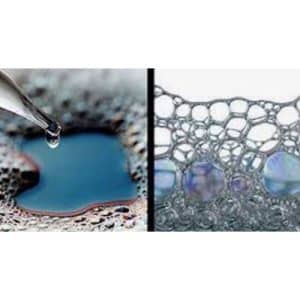Description
Flame retardants are additives used in paint formulations to improve the fire resistance of coatings. They help reduce the flammability of painted surfaces and inhibit the spread of flames in the event of a fire. Flame retardant additives are commonly used in a variety of applications, including architectural coatings, automotive coatings, and industrial coatings. Here are common types of flame retardants used in paints:
1. Phosphorus-Based Flame Retardants:
- Examples:
- Red phosphorus
- Phosphorus-containing compounds (e.g., phosphates, phosphonates)
- Functions:
- Act as flame inhibitors by releasing phosphoric acid, which can interfere with combustion.
- Effective in reducing flammability in various types of coatings.
2. Halogenated Flame Retardants:
- Examples:
- Brominated flame retardants (e.g., tetrabromobisphenol A, hexabromocyclododecane)
- Chlorinated flame retardants
- Functions:
- Interfere with the combustion process by releasing halogenated compounds that can inhibit flame propagation.
- Commonly used in plastic-based coatings.
3. Aluminum Trihydrate (ATH):
- Functions:
- Releases water vapor when exposed to heat, cooling the surface and inhibiting combustion.
- Suitable for water-based coatings and non-halogenated flame retardant systems.
4. Melamine-Based Flame Retardants:
- Examples:
- Melamine cyanurate
- Melamine polyphosphate
- Functions:
- Create a char layer that acts as a barrier to heat and oxygen, reducing flammability.
- Used in various coatings, including intumescent coatings.
5. Intumescent Flame Retardants:
- Examples:
- Ammonium polyphosphate
- Pentaerythritol
- Functions:
- Expand and form a protective char layer when exposed to heat, insulating the substrate and delaying ignition.
- Commonly used in coatings for wood, steel, and other substrates.
Considerations for Flame Retardant Selection:
- Substrate Compatibility: Ensure compatibility with the specific substrate material (e.g., wood, metal, plastic).
- Performance Requirements: Evaluate the desired level of fire resistance and the regulatory standards for the intended application.
- Environmental and Regulatory Considerations: Choose flame retardants that meet environmental and regulatory standards, with a focus on minimizing environmental impact.
It’s important to note that the effectiveness of flame retardants may vary depending on the specific formulation, the substrate, and the environmental conditions. Manufacturers typically conduct testing to determine the optimal combination and concentration of flame retardants for their particular paint system. Compliance with relevant fire safety standards and regulations is crucial when formulating flame-retardant paints.















Reviews
There are no reviews yet.